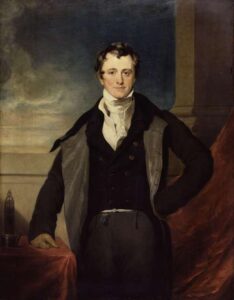 Humphry Davy, a pioneering figure in the field of chemistry and science, made an indelible mark on the world by not only uncovering new elements but also by revolutionizing the field of medicine through his significant contribution to the development of anesthesia. Born in 1778 in Penzance, Cornwall, Davy's scientific curiosity and innovative thinking led him to uncover groundbreaking discoveries that transformed medical practices and paved the way for modern surgical procedures.
Humphry Davy, a pioneering figure in the field of chemistry and science, made an indelible mark on the world by not only uncovering new elements but also by revolutionizing the field of medicine through his significant contribution to the development of anesthesia. Born in 1778 in Penzance, Cornwall, Davy's scientific curiosity and innovative thinking led him to uncover groundbreaking discoveries that transformed medical practices and paved the way for modern surgical procedures.
Davy's early life was marked by a profound interest in science and chemistry. He gained recognition for his exceptional skills in laboratory experimentation and was appointed as the superintendent of the Pneumatic Institution in Bristol in 1799. It was during his time at the institution that Davy delved into the properties of various gases, which ultimately played a crucial role in his contribution to anesthesia.
One of Davy's most significant contributions to the medical field was his exploration of the properties of nitrous oxide, commonly known as "laughing gas." By inhaling nitrous oxide himself and observing its effects, he noticed its anesthetic properties. In 1800, he published a paper detailing his findings, showcasing the gas's ability to induce insensibility to pain and its potential application in medical procedures.
Davy's discovery of nitrous oxide's anesthetic properties was met with skepticism initially, but it laid the foundation for the future development of anesthesia. His research opened up new avenues for pain management during surgeries and medical interventions. However, it wasn't until several decades later that his work was fully appreciated and put into practical use.
In the mid-19th century, Davy's findings on nitrous oxide's anesthetic effects gained renewed attention. Dentist Horace Wells and surgeon William Morton explored the gas's potential for pain relief during dental procedures and surgeries, respectively. Morton, in particular, used ether as an inhalation anesthetic, which marked a turning point in surgical practices.
Davy's experiments and insights also inspired further research into other forms of anesthesia, including chloroform and ether. These developments led to safer and more effective methods of administering anesthesia, revolutionizing surgical procedures. The use of anesthesia not only alleviated patients' pain but also enabled surgeons to perform more complex and intricate operations, enhancing the overall quality of medical care.
Beyond his contribution to anesthesia, Davy's legacy extended to his broader scientific achievements. He is credited with the discovery of several elements, including sodium, potassium, and calcium, and he developed the Davy lamp, a safety lamp for miners that prevented explosions in coal mines. His innovative spirit and commitment to advancing scientific knowledge earned him numerous accolades and honors during his lifetime.
Humphry Davy's groundbreaking work in the field of anesthesia remains a cornerstone of modern medicine. His keen observations, daring self-experimentation, and dedication to expanding the boundaries of scientific understanding have left an enduring impact on the medical community and the countless patients who benefit from pain-free surgeries today. As the father of modern anesthesia, Davy's legacy serves as an inspiration to generations of scientists and medical professionals who continue to push the boundaries of medical innovation
He was knighted in 1812 and elected as president of the scientific society, the Royal Society in 1820. Although much admired yet disliked by many, he died a lonely man in Genera, Switzerland on May 29, 1829.



